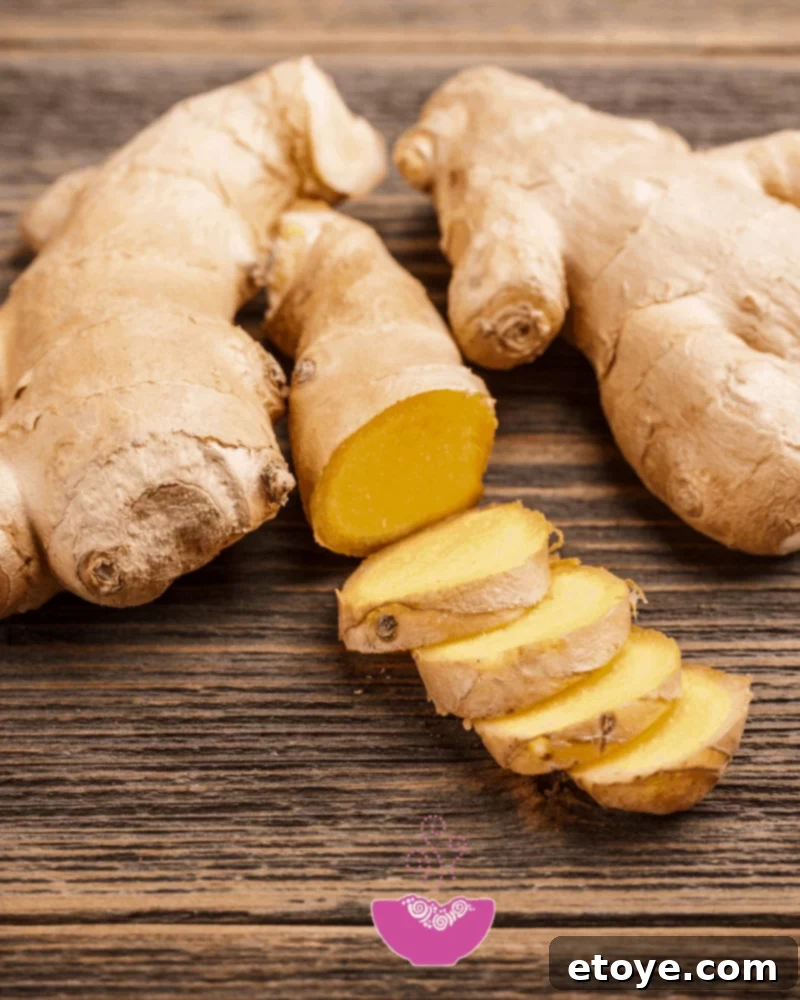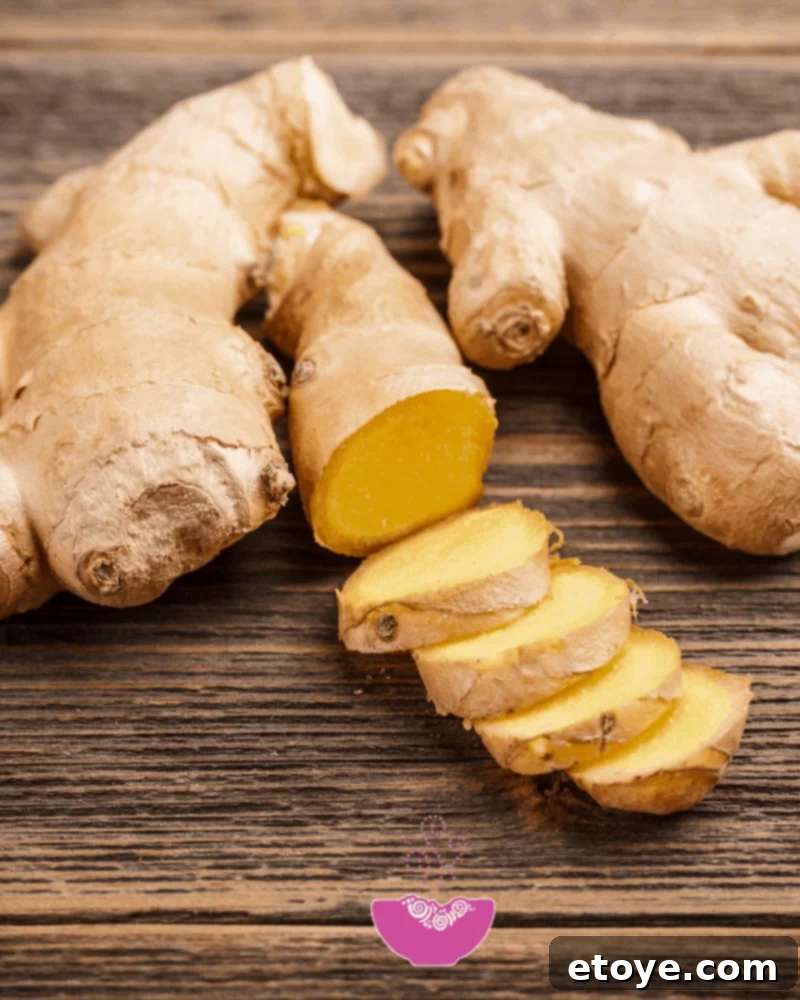Freshly grated ginger is a culinary powerhouse, an indispensable ingredient that can elevate the flavor profile of countless dishes. Its distinctive zesty, spicy, and aromatic notes make it a versatile addition, perfect for imparting a savory depth to stir-fries, noodle dishes, and even vibrant sauces like pineapple teriyaki. Learning how to properly prepare and utilize this wonderful root is a game-changer for any home cook looking to enhance their culinary creations and embrace healthier eating habits.

Mastering Buddha Bowl Basics with Fresh Ginger

Buddha Bowls have taken the culinary world by storm, offering a delightful and nutritious way to enjoy a balanced meal. These vibrant bowls typically feature a foundation of grains, topped with a variety of cooked and raw vegetables, a lean protein source, and a flavorful dressing. The beauty of a Buddha Bowl lies in its versatility and the endless combinations you can create, often making use of ingredients you already have on hand. Mastering some simple kitchen techniques, such as grating fresh ginger, will not only elevate your Buddha Bowl recipes but also help you save food and money by empowering you to cook more at home.
Incorporating fresh ginger into your Buddha Bowls adds a powerful punch of flavor and a host of health benefits. Whether it’s in a creamy dressing, a quick stir-fry component, or a marinade for your protein, fresh ginger brings a unique warmth and zing that brightens the entire dish. Today, we’ll focus on the essential skill of grating fresh ginger, ensuring you can effortlessly integrate this incredible root into any Buddha Bowl recipe that calls for it, and countless other dishes.
How to Grate Fresh Ginger – A Step-by-Step Guide for Culinary Excellence
Grating fresh ginger is an incredibly simple process, especially when you have the right tools. A microplane grater is your best friend here, as it produces finely grated ginger that is full of flavor and free of tough fibers. Follow these steps for perfectly grated ginger every time:
- Select Your Ginger: Choose ginger root that is firm, smooth, and heavy for its size. Avoid pieces that are wrinkled, soft, or have any mold spots. A pungent, fresh aroma is a good sign.
- Prepare the Ginger: While peeling is often recommended, it’s not strictly necessary when using a microplane grater. The grater’s fine teeth are designed to separate the tender flesh from the skin, leaving the peel behind. However, if you prefer to peel, a simple spoon is surprisingly effective. Scrape the edge of a spoon against the ginger’s skin to easily remove it, especially around the knobby parts. A vegetable peeler or small paring knife can also be used for larger, flatter sections.
- Position Your Microplane Grater: Hold the microplane grater steady against a flat surface, such as a cutting board or directly over a bowl. This provides stability and safety while grating.
- Grate the Ginger: Hold the peeled or unpeeled ginger root firmly and rub it back and forth or in a circular motion over the grater’s surface. Apply gentle, even pressure. You’ll see fine strands or a paste-like consistency of ginger collecting on the back of the grater. Continue until you have the desired amount of grated ginger. For safety, be mindful of your fingertips as you approach the end of the ginger piece.
- Harvest the Grated Ginger: Once you’ve finished grating, give your microplane grater a gentle tap against a hard surface or use a small spoon to scrape the back. The finely grated ginger will fall out, ready to be incorporated into your recipe.
- Storing Leftover Fresh Ginger: If you have unused ginger root, store it in an airtight container or a resealable plastic bag in the crisper drawer of your refrigerator. It can last for several weeks this way. For longer storage, you can freeze whole ginger root; simply grate it directly from frozen when needed. Alternatively, you can grate a larger batch, portion it into tablespoon-sized amounts, and freeze these in an ice cube tray with a little water or oil, then transfer to a freezer bag.
Fresh Ginger vs. Ground Ginger: Understanding the Distinct Differences
While both fresh ginger and ground ginger originate from the same plant, they are not interchangeable ingredients and possess vastly different flavor profiles and culinary applications. Understanding these distinctions is crucial for achieving the desired taste and texture in your dishes.
Fresh ginger is characterized by its pungent, spicy, zesty, and slightly citrusy notes. It contains active enzymes and volatile oils that give it a vibrant, “zingy” flavor and aroma. When grated, it releases a juicy pulp that is integral to many savory dishes. Fresh ginger is a star in Asian cuisines, found in marinades for meats, aromatic stir-fries with beef or chicken, flavorful noodle soups, and a variety of sauces, including that delectable pineapple teriyaki sauce. It also shines in refreshing drinks, teas, and even some sweet applications where its fresh bite is desired.
Ground ginger, on the other hand, is made from dried ginger root that has been finely pulverized into a powder. The drying process alters its chemical composition, resulting in a more concentrated, earthy, warm, and somewhat spicy flavor, but without the fresh, bright notes of its raw counterpart. Ground ginger is a staple in baking, adding its distinctive warmth to beloved treats like gingerbread cookies, pumpkin pies, and ginger cake. It’s also commonly used in spice blends for rubs, curries, and certain savory dishes where a subtle, deep ginger flavor is preferred without the moisture or texture of fresh ginger.
Attempting to substitute ground ginger for fresh ginger in a recipe that calls for the latter will often lead to a less vibrant, duller flavor profile, and vice versa. While a general rule of thumb suggests that 1 teaspoon of ground ginger is equivalent to 1 tablespoon of fresh ginger, this substitution should only be made in a pinch and with the understanding that the dish’s character will change significantly. For the best culinary results, always use the form of ginger specified in the recipe.
Exploring Fresh Ginger Alternatives: Convenience Without Compromise
Sometimes, fresh ginger isn’t readily available, or you might be looking for a more convenient option that still delivers authentic ginger flavor. Fortunately, there are excellent alternatives that can save you time without sacrificing taste.
Frozen Ginger: Your Convenient Go-To
One of the best fresh ginger alternatives is pre-portioned frozen ginger. Many grocery stores stock this in the freezer section, often from brands like Dorot Gardens. This packaged ginger is incredibly convenient, typically already split into tablespoon-sized portions or crushed cubes. It’s super easy to store in its original packaging and will last for an extended period in the freezer, making it a perfect pantry staple for busy cooks. When a recipe calls for fresh ginger, simply pull out a portion of frozen ginger and add it directly to your dish – no peeling or grating required! It thaws quickly and retains much of the flavor and aroma of fresh ginger, making it an excellent substitute for stir-fries, soups, and sauces.

Ginger Paste: A Ready-Made Option
Another popular alternative is ginger paste, often found in jars in the produce or international foods aisle of your grocery store. Ginger paste is essentially finely ground fresh ginger, sometimes with added oil, salt, or preservatives to maintain freshness. It offers a good level of convenience, as it’s ready to use straight from the jar. While it’s generally less potent and lacks the bright zing of freshly grated ginger, it works well in marinades, curries, and dishes where the ginger is cooked for a longer period. Always check the ingredient list for any added sugars or sodium that might affect your recipe.
Ginger Juice: For Smoothness and Potency
Less common but increasingly available is ginger juice. This concentrated liquid captures the essence of fresh ginger and can be a powerful flavor enhancer. It’s particularly useful in dressings, beverages, and delicate sauces where you want strong ginger flavor without any fibrous texture. A little goes a long way with ginger juice, so start with small amounts and adjust to taste.
The Abundant Health Benefits of Fresh Ginger
Beyond its incredible culinary appeal, fresh ginger is revered for its potent medicinal properties, having been used for centuries in traditional medicine systems around the world. Incorporating more fresh ginger into your diet can offer a range of health advantages:
- Powerful Anti-Inflammatory Effects: Ginger contains compounds called gingerols, which are responsible for many of its medicinal properties. These compounds have strong anti-inflammatory and antioxidant effects, helping to reduce inflammation and oxidative stress in the body. This can be beneficial for conditions like osteoarthritis and muscle pain.
- Relief from Nausea: Ginger is a well-known remedy for various forms of nausea, including morning sickness, seasickness, and chemotherapy-induced nausea. Just a small amount of fresh ginger can help soothe an upset stomach.
- Aids Digestion: It can accelerate gastric emptying, which may be beneficial for people with indigestion (dyspepsia). Ginger can also help alleviate bloating and gas.
- Immune System Support: With its antiviral and antibacterial properties, ginger can help support the immune system, making it a popular choice during cold and flu season. A warm cup of ginger tea is a comforting and effective remedy for sore throats and congestion.
- Pain Reduction: Studies suggest ginger may help reduce muscle pain and soreness, particularly exercise-induced muscle pain. Its anti-inflammatory properties contribute to this effect.
- Blood Sugar Regulation: Some research indicates that ginger may help lower blood sugar levels and improve various heart disease risk factors in people with type 2 diabetes.
With such a rich profile of flavor and health benefits, there’s every reason to make fresh ginger a staple in your kitchen. Whether you’re grating it fresh, opting for frozen convenience, or exploring other alternatives, the goal is to enjoy its unique qualities in your daily cooking.
If you have tried using fresh ginger, frozen ginger, or any recipe on my blog, then please rate it and let me know how it turned out in the comments below! Your feedback helps others discover delicious and healthy ways to cook.
